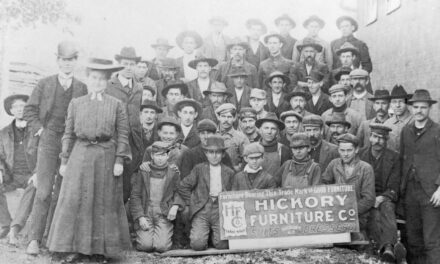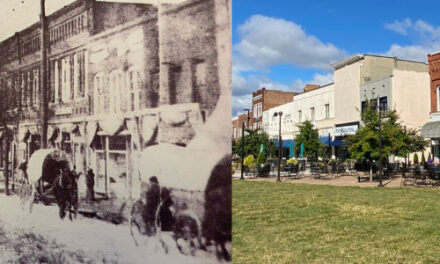
Last week, the Gentleman Pirate Stede Bonnet walked across these pages, introducing himself as an unlikely hero/villain in North Carolina history. His curious embrace of piracy shows that anybody can be anything they want, as long as they believe it, and in Stede’s case, have a large enough inheritance to back it.
And yet Stede Bonnet is far from being North Carolina’s most famous pirate. That title belongs to Edward Teach/Thacke/Tack (sources vary). The two were at one time partners though each claimed they were betrayed by the other. They had a lot in common. Both were from wealthy backgrounds. Both received pardons from the governor of NC. Both went back to piracy and ended up paying the ultimate price for their deeds.
Blackbeard, Teach’s alias and name of fame, looked much different from his gentlemanly counterpart. The heavily bearded pirate cultivated a fierce and menacing appearance. It was designed to deter anyone who might get the bright idea to challenge him. Unlike Bonnet, Blackbeard was an expert seaman and with bows in his beard and smoke pouring from it too. Blackbeard made sure no one mistook him for a “gentleman.”
With such a ferocious persona, you might wonder why North Carolinians would tolerate, even welcome such a scoundrel. The answer is actually very simple. Blackbeard had an ethic that they understood and appreciated. He and his fellows learned that working with the locals offered transactional benefits. The small farmers near the settlements of Albemarle and Bath distrusted the British government far more than they did Blackbeard. The passage of the Navigation Acts required crops be sold only to the British, priced and taxed as Parliament wanted. In exchange for refuge, pirates helped those farmers smuggle their goods to market with higher profits than what British mercantilism offered. They scratched each others backs.
Like Bonnet, Blackbeard met a fateful end, less than a month before Stede’s hanging in Charles Town. While Bonnet’s demise came at the behest of the SC governor, Virginia’s chief executive, Alexander Spotswood sent out a group to hunt Blackbeard down. They found him just off Ocracoke Island (again out of the jurisdiction of a neighboring governor) and the violent confrontation resulted in the pirate’s death. He was shot five times, slashed over 20. The victors hung his head on the mast of the ship as they landed to warn other buccaneers to behave themselves.
Despite the lure, the golden age of piracy was coming to an end. Six years after the death of both, a book entitled A General Historie of the Robberies and Murders of the Most Notorious Pyrates was published, with some likely embellishments that have served to cement the legend. From those pages, Blackbeard became one of the America’s first anti-heroes, retold as the bad guy who was actually good, a useful characterization seen countless times in story, film and game. Pirates of the Caribbean turned the type into its own franchise.
But just when you think the pirate character has been twisted as many ways as it can, comes another real life example that turns the genre on its head. That’s next week.
Photo: The famous Edward Teach, infamous in his day as Blackbeard.








